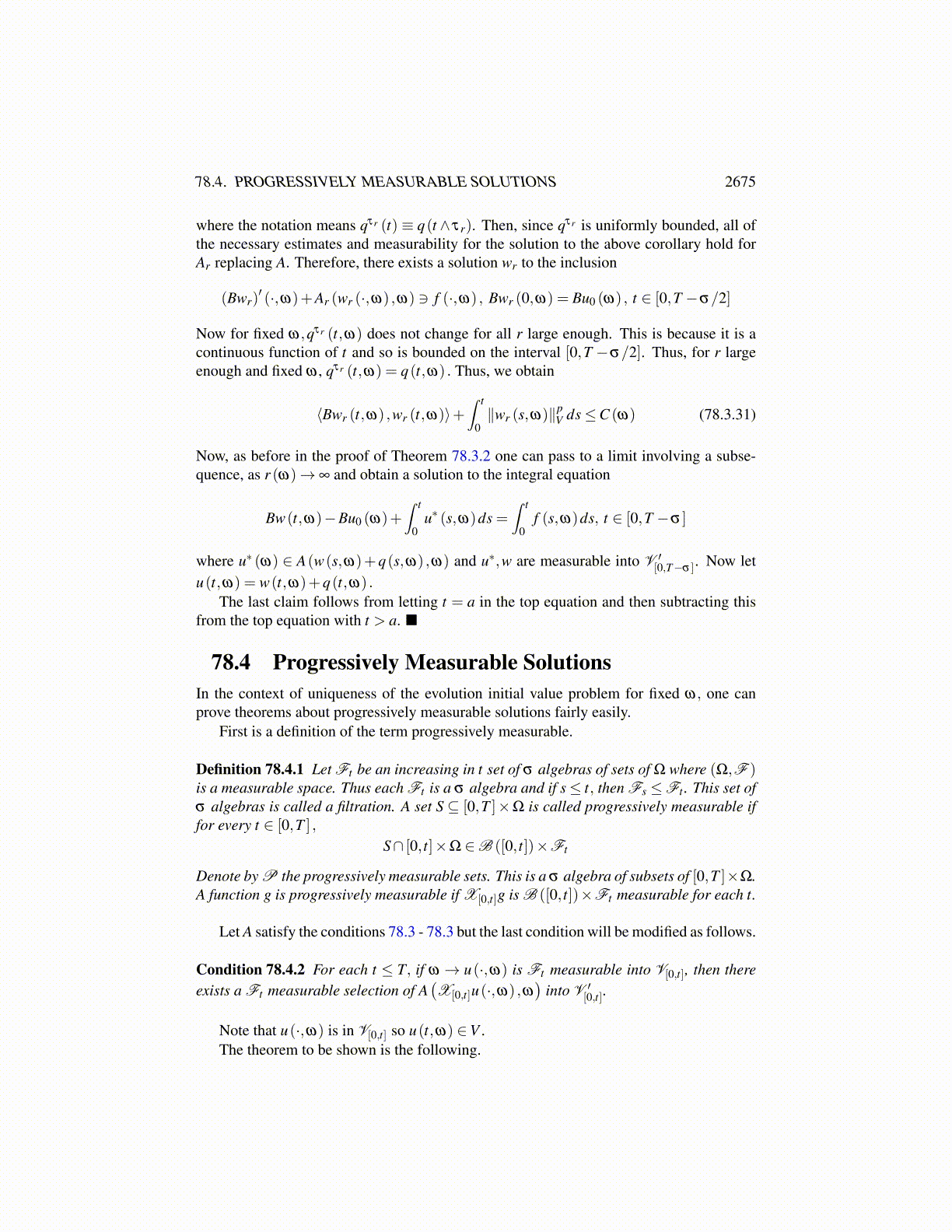
78.3. RELAXED COERCIVITY CONDITION 2675
From what was shown above, ⟨Buε ,uε⟩(0) = ⟨Bu0,u0⟩. Now passing to the limit asε → 0,
Lu+u∗ = f
in U ′r . But every term is in V ′ except the first and so it is also in V ′. Also, we know that
⟨Buε ,uε⟩(0) = ⟨Bu0,u0⟩ and by Theorem 78.1.8, ⟨Bu,u⟩(0) = ⟨Bu0,u0⟩ also. Then theintegration by parts formula yields
12⟨Bu,u⟩
(T̂)− 1
2⟨Bu0,u0⟩+
∫ T̂
0⟨u∗,u⟩dt =
∫ T̂
0⟨ f ,u⟩dt
which shows ∫ T̂
0⟨u∗,u⟩dt =
∫ T̂
0⟨ f ,u⟩dt− 1
2⟨Bu,u⟩
(T̂)+
12⟨Bu0,u0⟩
Then from 78.3.30 and the lower semicontinuity shown in 78.3.29, it follows that
lim supε→0
∫ T̂
0⟨u∗ε ,uε⟩ ≤
∫ T̂
0⟨ f ,u⟩dt +
12⟨Bu0,u0⟩− lim inf
ε→0
12⟨Buε ,uε⟩
(T̂)
≤∫ T̂
0⟨ f ,u⟩dt +
12⟨Bu0,u0⟩−
12⟨Bu,u⟩
(T̂)=∫ T̂
0⟨u∗,u⟩dt
Thus we have uε → u weakly in VI and (Buε)′→ (Bu)′ weakly in U ′
rI ,
lim supε→0
∫ T̂
0⟨u∗ε ,uε −u⟩ ≤
∫ T̂
0⟨u∗,u⟩−
∫ T̂
0⟨u∗,u⟩= 0
Therefore, by the limit condition 78.3, for any v ∈ V
lim infε→0
∫ T̂
0⟨u∗ε ,uε − v⟩ ≥
∫ T̂
0⟨u∗ (v) ,u− v⟩ , some u∗ (v) ∈ A(u,ω)
In particular, this holds for u and so, in fact,∫ T̂
0 ⟨u∗ε ,uε −u⟩ converges to 0. Therefore,
∫ T̂
0⟨u∗,u− v⟩ = lim
ε→0
∫ T̂
0⟨u∗ε ,u− v⟩
≥ lim infε→0
(∫ T̂
0⟨u∗ε ,u−uε⟩+
∫ T̂
0⟨u∗ε ,uε − v⟩
)
≥∫ T̂
0⟨u∗ (v) ,u− v⟩ , some u∗ (v) ∈ A(u,ω)
since v is arbitrary, this shows from separation theorems that u∗ (ω)∈A(u(ω) ,ω) in V ′[0,T̂ ]
.
This has proved the following theorem in which a more general coercivity condition isused.